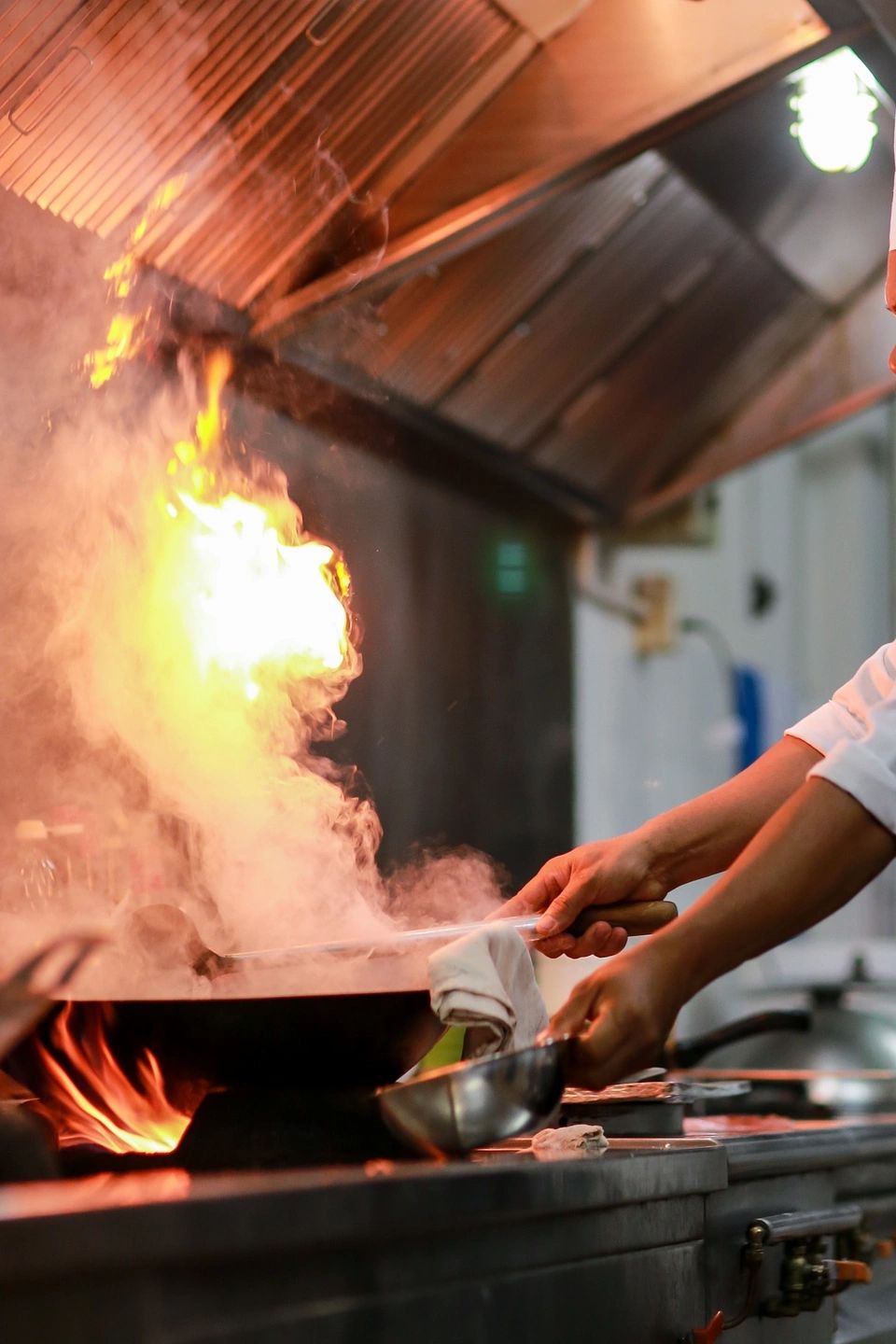At this point, we’re all aware of the harms of corporate-processed seed and vegetable oils. The problem has been well-stated, so now it’s time for solutions. This article will go through a list better cooking fats, how they behave, what foods to use them with, and what not to do.
Butter
We’ll start with the first and most obvious one. I’ve previously written about butter and some of its chemistry here, but we’ll discuss a brief review.
Butter is a water-in-oil emulsion; that is, water and air bubbles are trapped in milk fat. Typically you’re buying sweet cream butter, though cultured cream butter and soured butter do exist. You can buy salted or unsalted butter; I always recommend unsalted. There’s no hard standard for the salt composition of salted butter, which makes it very difficult to control in a dish.
Butter is a fantastic general purpose cooking fat. Use this when sautéing vegetables, baking, scrambling eggs, or even making chicken cutlets.
Butter should not be used for frying, whether shallow or deep frying. The smoke point is 350F, which is too low for frying.
Ghee
Ghee is clarified butter. It’s made by heating butter slowly over several hours until all the water is gone and the butter has clarified. At this point, ghee is shelf-stable. If you want “butter-fried” something, ghee is fine to use. The smoke point is 485F.
The downside to ghee is that it tends to absorb the odors of the food you fry in it. If I’m making French fries or some other fried potato or vegetable, it doesn’t pose a problem. On the other hand, ghee becomes single use if you fry chicken or meat in it. Even after filtering, it retains the odor of the meat in a very unpalatable way. I reserve ghee for frying veggies in only; otherwise I’m going through way more than I’d prefer. I’ll be able to use ghee 4-5 times before I have to discard it.
You can use ghee for everything you would use butter for, with the addition of frying.
Tallow
Beef tallow, in contrast to ghee, doesn’t seem to absorb odors of meat fried in it. This makes it more reusable, and thus cheaper overall. It does take a long time to render if you’re doing it yourself.
The smoke point of beef tallow is 420F, which is lower than ghee. However, it’s still great for frying, and is shelf-stable at room temperature.
I only use tallow for frying. There is a significant “beefy” scent to it, which is fine for fried foods, but my test audience didn’t care for its use in sautéing or making anything with eggs.
Coconut Oil (refined)
In theory, you can take advantage of the high (450F) smoke point of coconut oil for frying as well, but I don’t use it to fry anything except maybe shrimp when I’m wanting coconut shrimp. This cooking fat definitely imparts a flavor on any food you cook with it, so be sure that coconut essence is what you want.
I love using it for baking and making soaps, lotions, and shave creams.
Olive oil
If you’re getting good olive oil, this stuff is expensive enough you probably don’t want to cook with it that often. You’d rather drizzle it on a nice salad or on a crusty piece of bread. The smoke point of olive oil can range from 375F-460F, depending on whether you’re using extra virgin, virgin, or extra light. Buyer beware: most olive oils are adulterated with canola or soybean oil, particularly if they’re cheap. Be sure you’re getting decent olive oil.
If I do use olive oil for cooking, I’ll use it to sauté vegetables only.
Sesame oil
I like a good toasted sesame oil for making Asian dishes and for drizzling over rice. This one probably sits close to the “evil” line for many of you, so make your own decision. If you get good toasted sesame oil, it’s been mechanically pressed from toasted seeds and hasn’t gone through the typical refining process of other seed oils.
Typically when I make an Asian dish, I’ll do most of the high heat work with bacon grease, and finish it off with toasted sesame oil. I’ll also use the sesame oil to make the various stir-fry sauces I use to get the right flavor.
Bacon Grease
Hands down this is my favorite all-purpose cooking fat. I simply save the grease left over when I cook bacon and filter it (while still warm and liquid) with a fine-mesh strainer into glass jars I store in the fridge. You don’t even have to pay any extra for it.
I use this just about any time I need to reach for a cooking fat, unless I’m deep frying. I sauté vegetables and meat, pan-fry (you’re only using 1-2 tbsp. of fat here), make tortillas, and cook eggs. I don’t use bacon grease for baking, since the bacon flavor will show up in the finished product.
Avocado Oil
I don’t find a need for avocado oil. Every purpose it would generally be used for is covered by one of the other above fats, and I can’t be sure of its authenticity where I live.
Conclusion
Everyone will have different needs and preferences based on his diet, so feel free to accept or reject any of these for your personal purposes. Availability may be a factor as well, so if you can’t get coconut oil, don’t sweat it. Leaving corporate-processed vegetable and seed oils behind doesn’t restrict your cooking fat choices very much. You can still have just about everything you want to eat, including fried foods, if you’ve rejected vegetable and seed oils.











